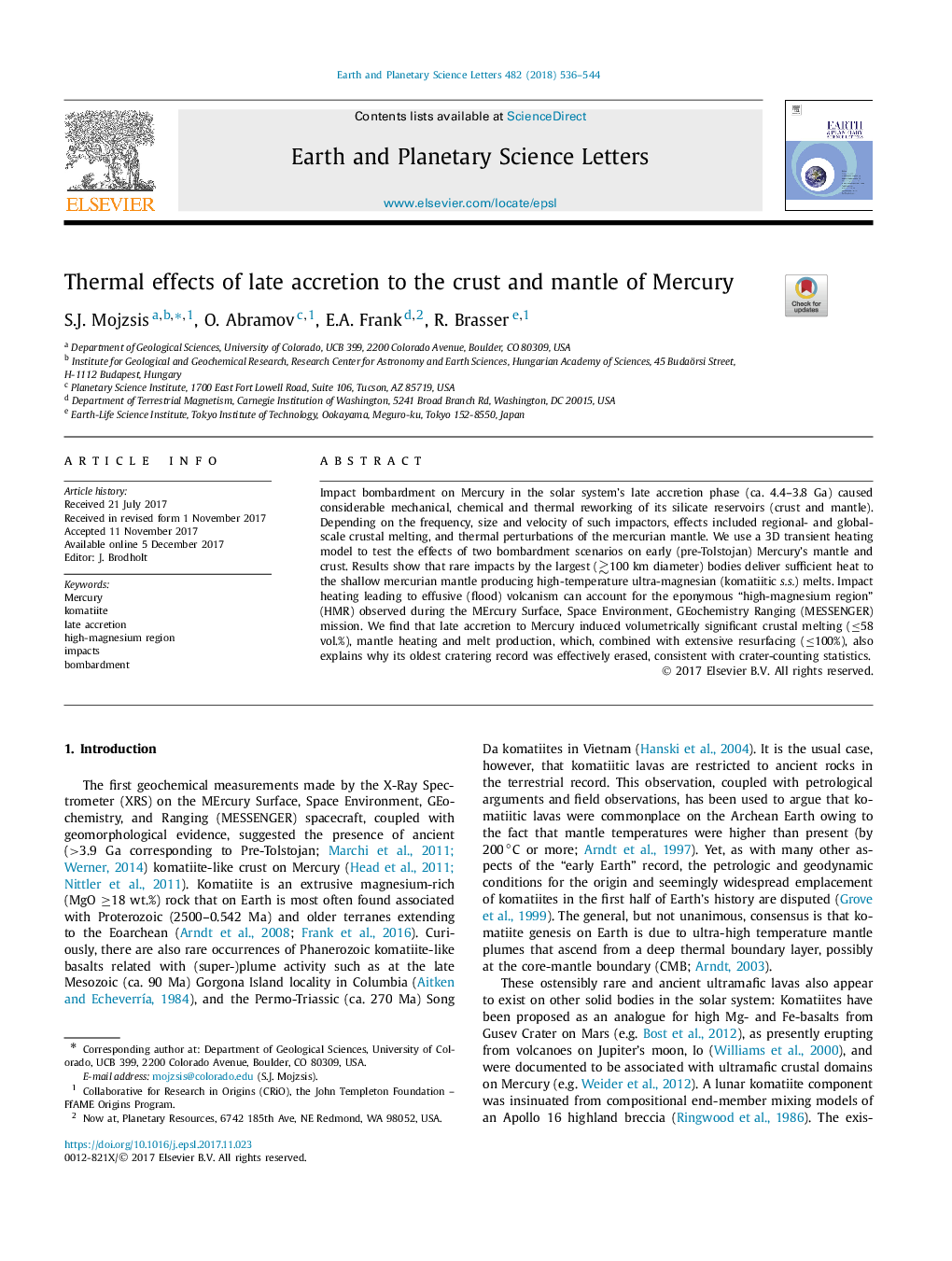| Article ID | Journal | Published Year | Pages | File Type |
|---|---|---|---|---|
| 8907300 | Earth and Planetary Science Letters | 2018 | 9 Pages |
Abstract
Impact bombardment on Mercury in the solar system's late accretion phase (ca. 4.4-3.8 Ga) caused considerable mechanical, chemical and thermal reworking of its silicate reservoirs (crust and mantle). Depending on the frequency, size and velocity of such impactors, effects included regional- and global-scale crustal melting, and thermal perturbations of the mercurian mantle. We use a 3D transient heating model to test the effects of two bombardment scenarios on early (pre-Tolstojan) Mercury's mantle and crust. Results show that rare impacts by the largest (â³100 km diameter) bodies deliver sufficient heat to the shallow mercurian mantle producing high-temperature ultra-magnesian (komatiitic s.s.) melts. Impact heating leading to effusive (flood) volcanism can account for the eponymous “high-magnesium region” (HMR) observed during the MErcury Surface, Space Environment, GEochemistry Ranging (MESSENGER) mission. We find that late accretion to Mercury induced volumetrically significant crustal melting (â¤58 vol.%), mantle heating and melt production, which, combined with extensive resurfacing (â¤100%), also explains why its oldest cratering record was effectively erased, consistent with crater-counting statistics.
Related Topics
Physical Sciences and Engineering
Earth and Planetary Sciences
Earth and Planetary Sciences (General)
Authors
S.J. Mojzsis, O. Abramov, E.A. Frank, R. Brasser,
